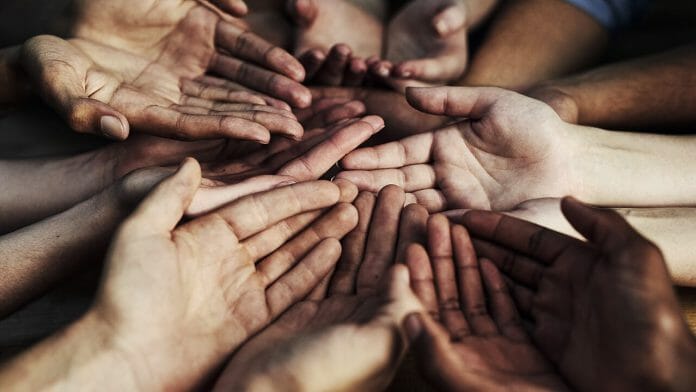Malaysia has made great progress in eliminating extreme poverty and lowering absolute poverty before COVID-19. Yet, despite the great progress Malaysia has made in certain SDG indicators, as at Goal Level, various Malaysian states have different challenges levels to attain the SDGs. Some of the indicators that of concern to Malaysia is the general relative
poverty and gap between urban and rural relative poverty.
In the development economics literature, poverty is primarily described as the inability to access resources needed to enjoy basic living standards. The elimination of poverty in SDG 1 is often at the essence of every country’s economic and development policies. Overall, Malaysia has not achieved the target set for SDG 1. Significant challenges remain even
though the country is expected to transition to a high-income nation in the next three to five years (World Bank, 2021).
The goal of SDG 1.2 is, by 2030, reduce at least by half the proportion of men, women, and children of all ages living in poverty in all its dimensions according to national definitions.
Three measurements were adopted for this indicator, namely the incidence of absolute poverty, relative poverty, and the percentage of urban-rural poverty gap.
Incidence of absolute poverty
Poverty is commonly measured in absolute terms so that it is easily benchmarked against universally acceptable requirements for cross-country comparisons. Specifically, sub-target 1.2.1, measures the proportion of the population living below the national poverty line.
Despite the continuous economic growth since independence in 1957, absolute poverty is still prevalent in Malaysia. According to the Household Income and Basic Amenities Survey (2019), a household is considered as absolute poor if its total household income is below the Poverty Line Income (PLI) value (p.85). The Department of Statistics Malaysia (DOSM)
calculates the PLI using the Cost of Basic Needs approach. Which in essence means that the PLI is derived based on Food PLI based on nutritional needs and Non-food PLI based on consumption patterns and necessities of low-income households.
Most states recorded a high percentage of absolute poverty except two developed states (Selangor, Penang) and Federal Territories, Putrajaya and Kuala Lumpur. Kuala Lumpur and Putrajaya are the best two performers with only 0.2% and 0.4% incidence of absolute poverty respectively. Sabah remains the state with the highest incidence of absolute poverty at 19.5%,
followed by Kelantan at 12.4% and Sarawak at 9%. These three states face extreme challenges in achieving the SDG 1.2.1 goal due to the low scores recorded so far.
Among the three measurements used to measure the progress of SGD 1.2, it is comparatively easier for Malaysia to reduce the incidence of absolute poverty. Data shows that most states have covered at least three-quarters of the threshold benchmark. In general, Malaysia still faces challenges in eliminating the incidence of absolute poverty, but results seem promising as it indicates an upward trend towards achieving the SDG 1.2.
Recent report published by DOSM (2020) reveals an increase in the incidence of absolute poverty from 5.6% in 2019 to 8.4% in 2020. The increase in absolute poverty in Malaysia is caused by the direct and indirect economic consequences of the COVID-19 pandemic. Before the pandemic, Malaysia was performing relatively well as absolute poverty reduced from
7.6% in 2016 to 5.6% in 2019.
The launch of the 12 th Malaysia plan (RMK12), is dedicated to eradicating hardcore poor, addressing poverty issues, and building an inclusive Malaysian society. Some of the critical points in the 12 th Malaysian plan to resolve poverty issues include multiplying growth in less developed states by increasing economic activities and improving infrastructure and
connectivity in these states.
RMK12 also highlights the government’s priority to encourage the economic development of less developed states such as Kedah, Kelantan, Perlis, Sabah, Sarawak, and Terengganu. Coincidentally these states have recorded a high incidence of absolute poverty as discussed previously. With these plans and policies in place, the country is a step closer to achieving
SDG goal 1.2 in the next five years.
Incidence of relative poverty
The second measurement used to track the progress towards SDG 1.2 is the incidence of relative poverty in the country. Relative poverty is not measured using the PLI but looks at the living standards determined by household income. Data from the Household Income and Basic Amenities Survey (2019) revealed that the incidence of relative poverty has increased from 15.9% to 16.9% between 2016 to 2019. The survey defines relative poverty as follows: Households are categorized as relatively poor at the national level when the average monthly household income is less than 50 percent of the national median income.
Overall, Malaysia is not faring well in this measurement as the indicator shows a downward trend with major challenges remaining. Most of the states are not even halfway through achieving the optimum value of the indicator (i.e., a score of 50). The best performers are Pahang with only 6% of the population living in relative poverty, followed by Terengganu
(8.2%) and Kelantan (9.9%). Melaka is the worst performer in this category, with 17% of the population living in relative poverty. Also in the red zone are developed states such as Selangor and Johor having 15.3% of the population living in relative poverty, followed by Sarawak at 15.2%.
This indicator paints an entirely different picture compared to the data on absolute poverty. A point to note is that relative poverty will always exist even though the state or country has achieved high income since it is a relative social and welfare deprivation measure. Relative deprivation indicates households that are relatively poor in comparison to other households.
At the state level, the income threshold for relative poverty is based on half of each state’s median income. Since relative poverty is dependent on the household income for the reference year, it indicates the socio-economic living standards in the respective state. Over time, this indicator will change in parallel with economic growth experienced by the state.
As discussed in the preceding section, the unveiling of RMK12 to reduce the development divide between states will eventually reduce the incidence of relative poverty in Malaysia. In order to achieve SDG 1.2 target, public policy for welfare spending needs to be adequately addressed by the state government for this indicator to allow more targeted welfare spending.
Percentage of the urban-rural poverty gap
The final measure used to indicate the progress of SDG goal 1.2 looks at the percentage of the urban-rural poverty gap. This indicator directly compares relative poverty among households in urban and rural locations within states in Malaysia. The indicator shows the increasing trend of the urban-rural poverty gap and uneven rural-urban economic expansion experienced by different states.
Overall, Malaysia still faces significant challenges in reducing the urban-rural divide, and the indicator shows a stagnating trend. The urban-rural poverty gap had slightly improved from 21.9% in 2016 to 20.4% in 2019. East Malaysia states Sarawak and Sabah recorded the highest rural-urban pov2erty gap at 19% and 16.2% respectively. This is followed by
Selangor at 15.8%, and Negeri Sembilan at 10.2%. It is worth noting that five states: Pahang, Kedah, Terengganu, and Pulau Pinang, are progressing relatively well as these states have covered three-quarters of the distance to achieving the SGD goal. Only two states which are Melaka and Perlis, have decreased the urban-rural poverty gap to below 2%.
Rural development has been given priority in the 10th Malaysia plan (RMK10). However, the country faces challenges reducing the urban-rural gap because 75% of the total land area consists of rural areas (EPU, n.d.). According to EPU, some challenges linked to rural development include low human capital capability, low income and unattractive job opportunities, inadequate rural basic infrastructure and other amenities and low productivity.
In recognition of that, the 11th Malaysia plan continues to reenergize economic activities, improve human capital, and provide basic infrastructure and services in the rural areas (EPU, n.d.). The move has successfully reduced the rural population from 25.7% (in 2015) to 22.8% (in 2020). As the RMK12 aims to lessen the uneven economic development of Malaysia, the rural-urban disparity will be further decreased. The indicator also provides a good reference point for policymaking to ensure a more balanced development within states.
Op-ed by Dr Sharon Koh, Director of Graduate Research Programs and Senior Lecturer at School of Business, Monash University Malaysia









